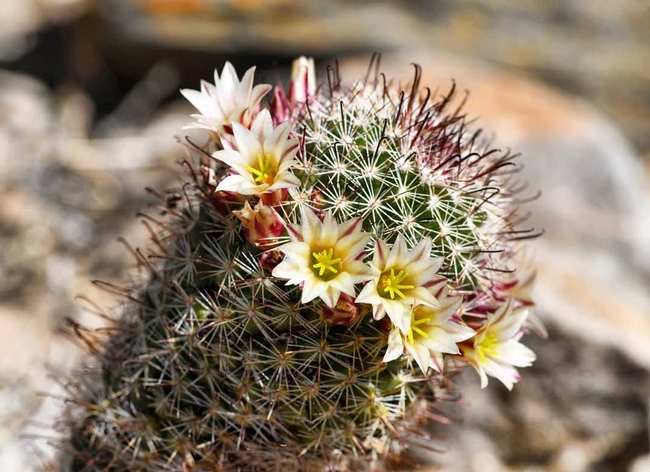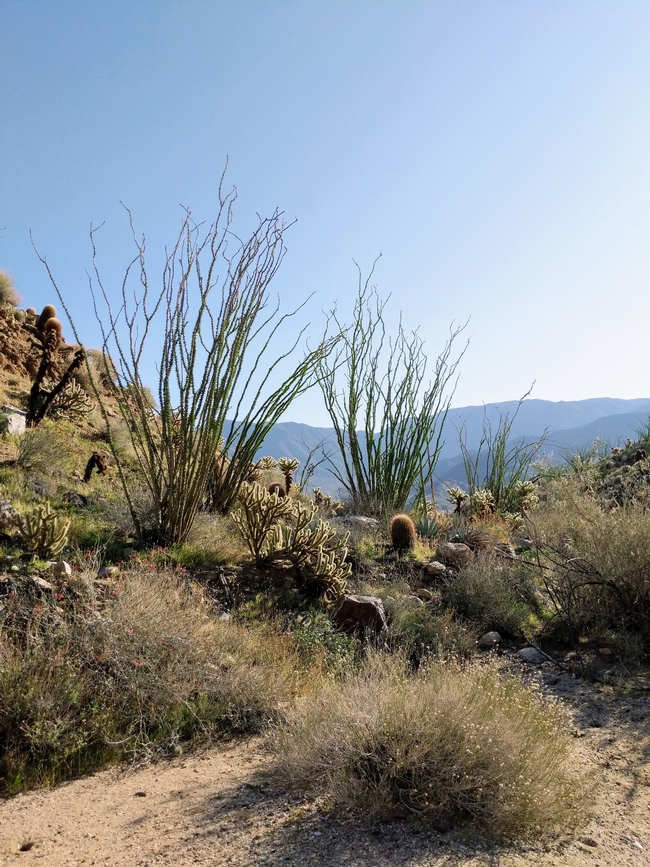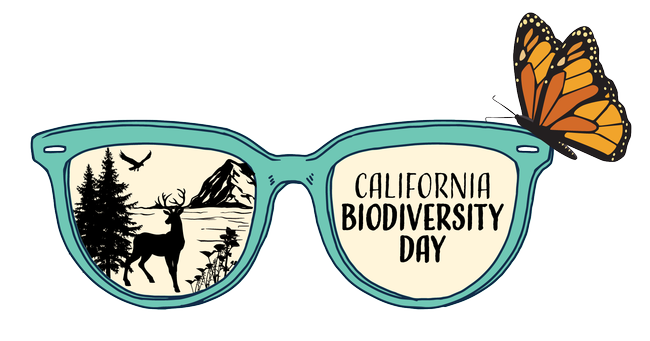Guest author Chloe Van Loon is a certified Grassroots Ecology California Naturalist, and writes about the Mojave Desert Biogregion for California Biodiversity Week 2021. You can follow more of Chloe's writings posted on Chloe Van Loon's Nature Blog.
For most of the past year and half I have nomadically roamed around California, chasing nature's “blooms”. That meant spending the winter in Mendocino County finding fungi, and springtime in the Bay Area wandering around for wildflower displays. Between these two Northern California spots, Joshua Tree was my home. For two months my husband and I searched for flowering annuals, prickly cacti, quick-footed reptiles, jumping rodents, and magnificent nocturnal moths.
Many California Naturalists may already know the desert ecosystems of California are incredibly diverse. I was well aware of this myself before spending time in the Sonoran and Mojave deserts. But a weekend trip really isn't enough, a week isn't enough, and two months isn't enough to fully grasp the ecology of desert ecosystems! I think it takes multiple years of visiting at different times. I think it's equally important to visit during a super bloom year as it is to visit in a non-super bloom year to see the diversity of species that have adapted to the extreme temperature fluctuations, long dry spells and the winter rain deluges.
This year, 2021 wasn't a super bloom year as the winter rainfall was pretty poor for much of the state. So we had to get smart about where and how to search for angiosperms and accompanying insect visitors. One resource that was super valuable was Tom Chester's Bloom Reports (tchester.org) for the Anza-borrego Desert, located about an hour and half south of Palm Springs. Unlike the alpine meadows of the Sierra mountains where at peak bloom my senses are overwhelmed with color, textures, and scents, iNat-ing the California deserts is a treasure hunt: it takes time for the human eye to hone in on the often cryptic and small plants amongst the desert floor. Having a general sense of the area's plants before heading out for a hike really helped in order to spot the common plants, rarities and lifers. Fellow California Naturalist, Colin Barrows' iNaturalist observations were also very helpful study tools. His Coachella Valley Wildflower iNaturalist Project was a great photo reference source. Projects like these are a fantastic resource and fortunately exist in similar forms all across California. Doing your homework by brushing up on what's been recently observed before heading out is totally worth it. You might be surprised how diverse the desert is.
Depending on the time of year - really even the week! - will dictate what might be blooming. Will the common Brittlebush (Encelia farinosa) still be producing its wonderful yellow compound flowers? Will my personal favorite the Desert Globemallow (Sphaeralcea ambigua) finally produce its glorious apricot orange petals? Will the gorgeous Sand Blazingstar (Mentzelia involucrata) have Sweat Bees visiting? But how will these plants, associated insects, and wildlife that use them for food or shelter cope with rising temperatures, altered rain regimes, and all the other compounding effects of climate change? A recently published study by Hantson et al. (2021) from UC Irvine suggests climate change is to blame for recent “strong” declines in vegetation cover, and these hardy dryland ecosystems are more at risk than previously thought to the effects of climate change. Oh no.
The Western Joshua Tree (Yucca brevifolia), the charismatic, long-limbed Dr. Suess-like trees of the Mojave desert, are the first plant species reviewed by California's Endangered Species Act to attribute climate change as a primary threat. Among other reasons like habitat loss, developments, and invasive species, the Western Joshua Tree's habitat may be almost totally gone by 2100. What other vulnerable species should be citing their primary threat to existence as climate change? For myself it's hard to imagine that any native California species escapes the negative effects of human induced climate change. Throughout my time in the desert I saw a Ladder-backed Woodpecker checking out the flowers of the Joshua Tree, Northern Mockingbird and Loggerhead Shrikes perched up high while LeConte's Thrasher and Gambel's Quails run between its shadows. Turn over a fallen branch and you might find beetles or weevils scurrying on the ground, or Giant Water Bugs crawling around if the branch had fallen in a creek. How will all these species fare with altered or absent Joshua Tree populations?
How will the biodiversity of California's desert's change in the near to distant future? Is the future only one round of Ocotillo's flowering? Will the Desert Bighorn sheep at lower elevations become locally extinct like Eeps et al. (2004) predicted? Both these species along with the other incredible flora and fauna of California's deserts evolved over time to produce the mosaic of biodiversity we see there today. How climate change is going to change this assemblage is perhaps predictable for some species, but I'm sure surprising for others. So I encourage everyone to visit, learn and appreciate how the species you see while visiting the deserts of California, and to ponder what adaptations they evolved over time to flourish there, and most importantly what you can do to keep it thriving in perpetuity.
September 4-12, 2021 is California Biodiversity Week. Join us in celebrating the unique biodiversity and renewing our commitment to stewarding the state's incredible natural heritage! During the Week, CalNat is posting blogs authored by members of our community, ending in our September 14th CONES event from noon-1:00 PM. Be sure to also check out a list of activities and resources online from the CA Natural Resources Agency!
Resources:
Hantson, Stijn, et al. "Warming as a driver of vegetation loss in the Sonoran Desert of California." Journal of Geophysical Research: Biogeosciences 126.6 (2021): e2020JG005942.
EPPS, C. W., McCULLOUGH, D. R., WEHAUSEN, J. D., BLEICH, V. C., & L. RECHEL, J. (2004). Effects of Climate Change on Population Persistence of Desert-Dwelling Mountain Sheep in California. Conservation Biology, 18(1), 102–113. doi:10.1111/j.1523-1739.2004.00023.x
Center for Biological Diversity. “Court Upholds Protection for California's Western Joshua Trees.” Center for Biological Diversity, Center for Biological Diversity, 22 Feb. 2021, biologicaldiversity.org/w/news/press-releases/court-upholds-protection-for-californias-western-joshua-trees-2021-02-22/.
Olalde, Mark. “Joshua Trees Can Be Legally Protected in California, Court Rules.” The Desert Sun, Palm Springs Desert Sun, 25 Feb. 2021, www.desertsun.com/story/news/environment/2021/02/24/joshua-trees-can-legally-protected-court-rules/4552210001/.




